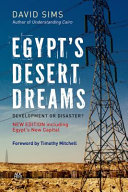Re-Reading Historical Cairo
Spatial Configuration Transformation

Overview
Traditionally, the analysis of historical sites depends heavily on researches that focused on the physical and social aspects of the sites. The main emphasis of such approaches was to analyze the architectural style and characters, social life and activities within the urban fabric, and to different extents, to examine other issues related to the environmental and physical conditions of buildings. However, the traditional analysis techniques exhibited an apparent lack in the perception of the 'spatial configuration–social behavior' relationship. Consequently, several researches emphasized a need to establish a scientific basis for a quantitative model that translates the way the social and spatial aspects simultaneously affect each other in historical sites. The paper’s main aim is to build a model framework that analyzes historical Cairo from the spatial configuration aspect, in order to understand the spatial and related social transformation through selected eras in history until present. This model gives a better understanding on why some activities and places are still alive until now. It comprises multilayer of analysis for the current situation (data triangulation using space syntax, field survey, and questionnaire), the research’s aspects (spatial, social, and physical), and interpretation method to analyze the results (dimensions). Based on the current situation, selected experiments are used to re-read the ‘Past’ of historical Cairo



